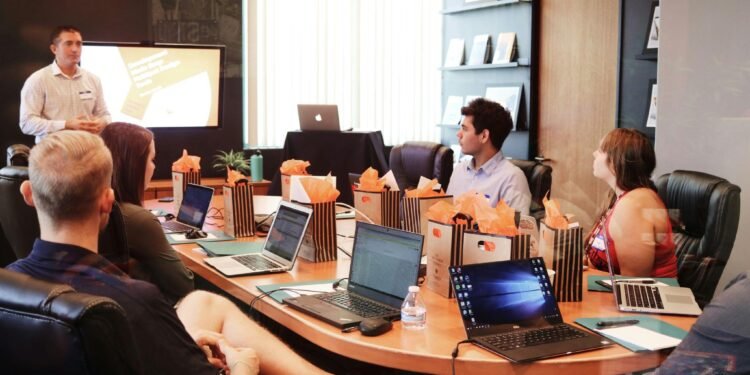Organizations increasingly use IT staff augmentation services to meet dynamic project demands. Augmented staff can fill skill gaps, speed up project delivery, and offer specialized expertise without long-term hiring commitments. This article will explore a step-by-step guide for successfully integrating augmented staff into your existing team to ensure seamless collaboration and maximize results.
Step 1: Assess Your Team’s Needs
Identifying Skill Gaps
Before hiring IT staff augmentation, businesses need to assess their internal team’s capabilities. What specific skills are missing? Is there a short-term need, or do you need experts for a longer period? Defining these gaps clearly helps align augmented staff with the right responsibilities from the start.
Setting Clear Objectives
Once skill gaps are identified, set clear goals for why you are using IT staff augmentation services. Are you looking to speed up software development or bring specialized knowledge for emerging technologies? Understanding your goal allows for better planning, budget allocation, and clearer integration strategies.
Step 2: Choosing the Right Augmented Staff Partner
Evaluating Potential Vendors
Choosing the right staff augmentation company is crucial. Research vendors read reviews, and examine case studies to ensure their experience aligns with your industry needs. Finding a staff augmentation company with a proven track record, familiarity with your technology stack, and cultural compatibility with your team is essential.
Conducting Interviews
While vendors may pre-screen candidates, conducting your interviews is vital. This step ensures that the augmented staff possesses the technical expertise and soft skills required for collaboration. Factors such as communication skills and adaptability should be considered during this process.
Step 3: Onboarding Augmented Staff

Orientation and Training
Onboarding is an essential step when integrating IT team augmentation. This process should include a comprehensive introduction to your company culture, project objectives, workflow, and tools. Documentation is vital here—ensure all relevant materials are organized and accessible to the augmented staff from day one.
Assigning a Mentor or Buddy
Assigning a mentor to the augmented staff helps them adjust quickly. This “buddy” can guide them through processes, answer questions, and serve as their go-to resource during the initial stages of integration. This approach fosters better collaboration and helps new team members feel supported.
Step 4: Establishing Effective Communication
Using Collaboration Tools
Collaboration tools like Slack, Zoom, or Trello can help remote software engineering staff augmentation teams communicate effectively with in-house staff. Structured communication and regular syncs ensure everyone is aligned and the project moves forward smoothly.
Regular Check-ins
Regular check-ins provide opportunities to monitor progress, give feedback, and address potential issues before they escalate. Scheduling weekly or bi-weekly meetings helps maintain transparency and fosters a stronger connection between in-house and augmented staff.
Step 5: Defining Roles and Responsibilities
Clear Role Distribution
Clearly defining the roles of both in-house and augmented staff is crucial to avoid confusion and overlap. By establishing distinct responsibilities from the beginning, you set expectations, allowing both groups to work efficiently toward the same objectives.
Setting Performance Metrics
Set clear performance metrics for the augmented team. Whether it’s deadlines, task completion, or specific KPIs, measurable goals help track progress and ensure the augmented staff meets the project’s objectives.
Step 6: Encouraging Team Integration
Building a Collaborative Culture
Fostering collaboration between in-house and augmented staff is vital for team unity. Organising team-building activities, project kickoffs, and open discussions about challenges creates a collaborative atmosphere that strengthens team cohesion.
Laying the Groundwork for Scalable Integration
When looking at long-term collaboration, it’s worth considering approaches to growing your custom integration team. Building a team that can evolve with your organisation requires thoughtful planning, consistent feedback loops, and a structure that supports both in-house and augmented staff.
Feedback and Continuous Improvement
Feedback is essential for continuous improvement. Hold regular feedback sessions to identify areas for adjustment. Whether addressing process improvements or skill gaps, feedback ensures that the augmented staff becomes fully integrated and productive within the team.
Best Practices for Integrating Augmented Staff
- Foster Open Communication: Use collaboration tools and schedule regular check-ins to ensure transparency.
- Provide Clear Documentation: Make sure the augmented staff has access to all relevant project materials.
- Assign Mentors: Assign a mentor to help new staff members navigate internal processes.
- Measure Performance: Set KPIs to track the contributions of the augmented team members.
- Adapt and Iterate: Continuously adjust integration strategies based on feedback and project developments.
Conclusion
Integrating augmented staff into your existing team can be a smooth and successful process with thoughtful planning, communication, and goal setting. By clearly defining roles, maintaining open communication, and fostering a collaborative culture, you can ensure that your IT staff augmentation strategy will not only fill critical skill gaps but also enhance overall project efficiency. With these steps, you can maximize the potential of augmented staff and ensure that your team operates seamlessly, regardless of its makeup.












